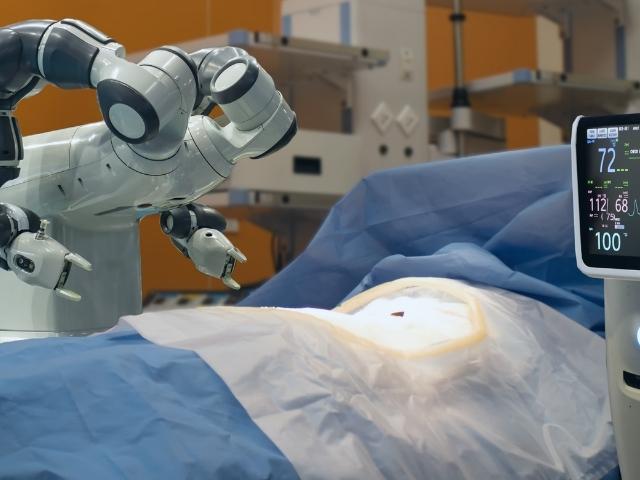- 374-C, Amrapali Circle, Vaishali Nagar, Jaipur
Amar Jain Hospital of Robotic Surgery
Amar Jain Hospital of Robotic Surgery
At Amar Jain Hospital, we are committed to delivering the highest standards of clinical excellence, and that's why we continuously invest in innovative technologies of the future to ensure our patients get the best care. The Amar Jain Institute of Robotic Surgery is one of the largest robotic surgical programs in India, which combines the advancements of robotic systems and the experience of specialists to make patient recovery easier and faster.
The Amar Jain Institute of Robotic Surgery aims to deliver superior patient outcomes over conventional surgical approaches. Amar Jain Hospital is equipped with 15 advanced surgical robotic systems, including Da Vinci X, Da Vinci Xi, Next Gen Versius, ExcelsiusGPS, and CORI surgical system. We have over 150 trained robotic surgeons in Amar Jain network hospitals who have successfully performed numerous robotic surgeries.
Advantages of Robotic Surgeries over Conventional Surgeries: Minimally invasive, Greater precision, Reduced blood loss, 3D surgery powered by Artificial Intelligence, Faster recovery and Short hospital stay
Robotic Head and Neck Cancer Surgery: Head & Neck cancer treatment is often associated with deterioration in speech, swallowing with associated facial or neck scars. Trans-Oral Robotic Surgery (TORS) is the latest and emerging technology which offers several advantages over other available treatment options.
It allows the surgeon to reach difficult to access areas in the throat or within the neck and remove the tumour through small robotic arms. These help in improving dexterity and precision. These can be placed inside through the mouth or through very small or inapparent incisions over the neck. TORS provide a broader view, high-resolution, and magnified three-dimensional optics for determining the specific mucosal surfaces of the head and neck through an endoscope while avoiding the extensive external neck incisions generally required for open surgeries. Compared to conventional surgeries, there is less pain, blood loss, reduced ICU stay, and fewer days of hospitalization, which means much faster recovery.
This technology can be used for selective cancers/tumours of the throat like tonsil, base of tongue, thyroid, parapharyngeal space, and neck.
Robotic Urologic Cancer Surgery: Robotic surgeries have made the management of complex urological malignancies easier, safer, and more desirable to both the surgeon and the patient. Commonly performed surgeries in this field include robotic surgery for prostate cancer, partial or complete removal of the kidney for kidney cancer, urinary bladder cancer, lymph nodes removal for testicular and penile cancer.
Robotic General Surgeries: Robotics, in general surgeries, has proved to be a significant success because it has helped doctors overcome certain limitations they used to face while performing conventional procedures. Gallbladder stones, Hernia Surgery, Appendicitis, Fundoplication, and other general surgeries can be robotically performed with ease.
Robotic Gastrointestinal surgery: Robotic surgery is performed to treat many types of gastrointestinal cancer, such as oesophagal cancer, gastric cancer, rectal cancer, and hepatopancreatobiliary cancer.
Robotic Kidney Transplant: Robot-Assisted Kidney Transplant (RAKT) is a minimally invasive technique that uses robotic support to perform a kidney transplant. RAKT is performed under the supervision of transplant surgeons specializing in robotics and transplant surgeries.
Compared to conventional open kidney transplant surgery, a much smaller incision of about 7 cms is made in RAKT to place the donor kidney into the abdomen, stitch the blood vessels, and the ureter. Then, another four or five small incisions of size 0.5 to 1 cm approx. are used to insert the instruments into the abdomen.
The surgeon uses the computer to manipulate small, more flexible surgical instruments than the human


